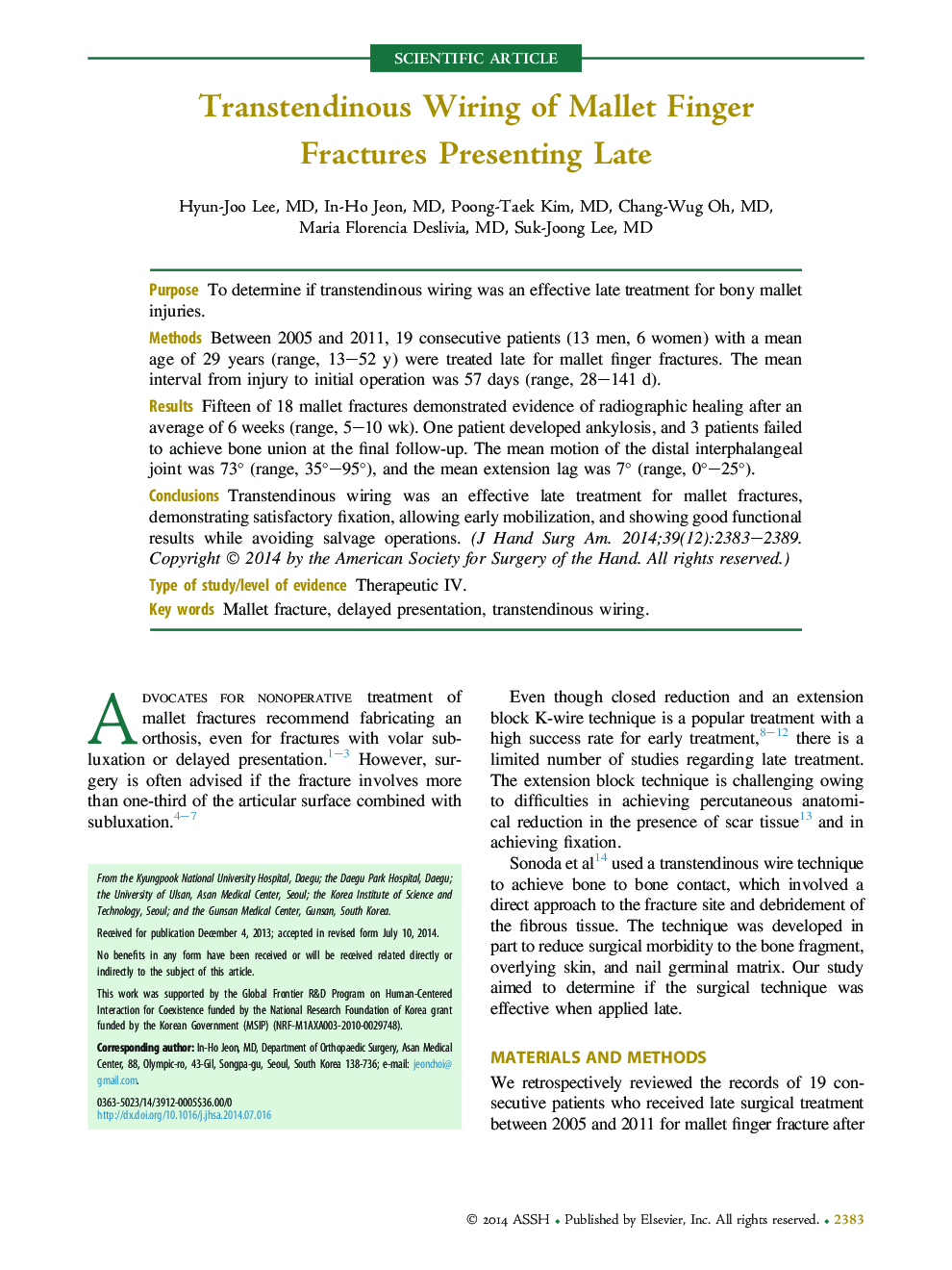| Article ID | Journal | Published Year | Pages | File Type |
|---|---|---|---|---|
| 4067092 | The Journal of Hand Surgery | 2014 | 7 Pages |
PurposeTo determine if transtendinous wiring was an effective late treatment for bony mallet injuries.MethodsBetween 2005 and 2011, 19 consecutive patients (13 men, 6 women) with a mean age of 29 years (range, 13–52 y) were treated late for mallet finger fractures. The mean interval from injury to initial operation was 57 days (range, 28–141 d).ResultsFifteen of 18 mallet fractures demonstrated evidence of radiographic healing after an average of 6 weeks (range, 5–10 wk). One patient developed ankylosis, and 3 patients failed to achieve bone union at the final follow-up. The mean motion of the distal interphalangeal joint was 73° (range, 35°–95°), and the mean extension lag was 7° (range, 0°–25°).ConclusionsTranstendinous wiring was an effective late treatment for mallet fractures, demonstrating satisfactory fixation, allowing early mobilization, and showing good functional results while avoiding salvage operations.Type of study/level of evidenceTherapeutic IV.
